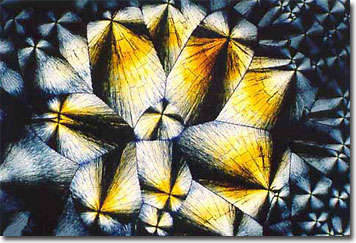Loes Modderman
Coumarin-Diclofenac Mixture
Coumarin is a naturally occurring compound that is found in many plants including lavender, woodruff, sweet clover, chamomile, and horse chestnut seed. Strawberries, apricots, cherries, and cinnamon are common dietary sources of this compound. Although it smells somewhat like an aromatic version of vanilla, coumarin actually has a very bitter taste that seems to repel even insects.

Commonly used in cosmetics, perfumes, and tobacco products, coumarin is also a component of optical brightening agents, as well as certain fluorescent and laser dyes. Extracts from the dark, almond-shaped seeds of the Tonka bean plant contain significant amounts of coumarin derivatives, and are often used to produce vanilla scent in fragrances. Isolated and identified coumarin derivatives rank in the hundreds, and they occur in a wide range of forms that vary from simple to complex. Many of these derivatives possess biologically active structures, and are synthetically reproduced as pharmaceutical compounds.
Under certain conditions, fungi or molds convert natural coumarin into toxic substances such as dicoumarol, a potent anticoagulant or blood thinner. Derivatives such as dicoumarol and warfarin interfere with the body's synthesis of vitamin K, and prevent manifestation of essential clotting properties in blood. In fact, lethal doses of the water-soluble anticoagulant warfarin are used as rodenticides or rat poison. Interestingly, a synthetic derivative of coumarin, warfarin sodium, is employed therapeutically in clinical medicine, and is manufactured as an anti-coagulant prescription drug that can be administered under the care of a physician.
Coumarin derivatives, which are marketed under various trademark names, are employed in treating such conditions as thrombophelbitis and pulmonary embolism. A main side effect of these blood-thinning pharmaceuticals is hemorrhage. Banned as a food additive by the FDA in the 1950's, this compound is believed to be potentially toxic to the liver when ingested.
As a well-known nonsteroidal anti-inflammatory drug (NSAID), diclofenac is produced in various delivery packages, including time-release capsules and tablets, injection, suppositories, eye drops, and topical gels. As a commonly prescribed drug, this substance is applied in the management of an increasingly diverse variety of ailments. For instance, it is widely used to provide temporary relief of mild to moderate pain and inflammation caused by arthritis, bursitis, soft tissue injuries, and tendonitis.
Diclofenac is believed to work by interfering with hormone-like molecules that are associated with pain and inflammation, which arise naturally in response to damage or disease. Preparations comprised of this medicinal aid are also prescribed as an effective treatment for acute gout, vascular headaches, abdominal cramps associated with menstruation, and postoperative pain. In addition, due to its ability to inhibit constriction of the pupils, doctors often administer diclofenac prior to delicate opthamological procedures. In treating sprains and strains, the medicament is spread over the surface area of skin.
Recently, a diclofenac sodium compound has been increasingly gaining recognition as an antineoplastic agent. As a topical gel, it is prescribed as a treatment for actinic keratosis, a skin condition believed to be caused by over exposure to the sun, which may develop into cancer if left untreated. Currently, medical investigations are on going as to the possible application of diclofenac in the treatment of other types of cancers.
BACK TO LOES MODDERMAN GALLERY
